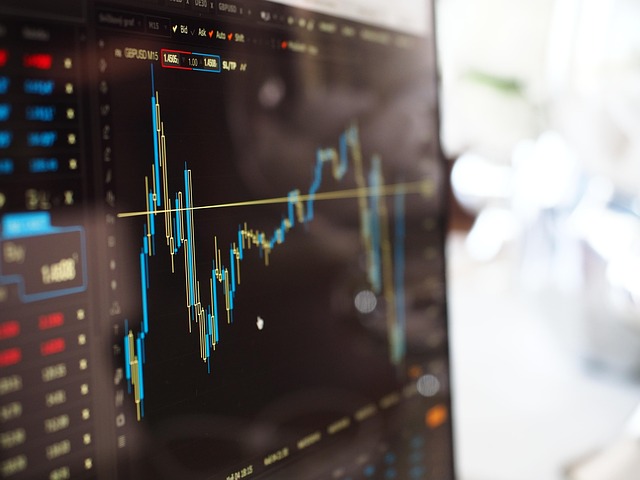Is Futures Trading Worth It? An In-Depth Examination of Opportunities, Risks, and Future Trends
Author: Jameson Richman Expert
Published On: 2025-08-13
Prepared by Jameson Richman and our team of experts with over a decade of experience in cryptocurrency and digital asset analysis. Learn more about us.
Futures trading has cemented its position as a fundamental pillar of modern financial markets, offering a multifaceted and potentially lucrative avenue for a diverse array of traders—from individual retail investors to colossal institutional players. Its appeal stems from the ability to leverage capital efficiently, gain exposure to a broad spectrum of underlying assets, and implement various strategic approaches—be it speculation, hedging, or arbitrage—in a highly liquid and transparent environment. As global markets become more interconnected and technology advances at a rapid pace, a comprehensive understanding of the mechanics, advantages, inherent risks, and emerging trends in futures trading is crucial for anyone contemplating participation. This in-depth analysis aims to provide a nuanced perspective, equipping traders with the insights necessary to determine if futures trading aligns with their financial ambitions, risk appetite, and strategic goals.

Understanding the Mechanics of Futures Trading: A Deep Dive
At its core, a futures contract is a legally binding agreement between two parties to buy or sell an underlying asset at a specified price on a predetermined future date. These contracts are meticulously standardized in terms of contract size, quality specifications, delivery date, and delivery location, streamlining trading on regulated exchanges such as the Chicago Mercantile Exchange (CME), Intercontinental Exchange (ICE), Binance Futures, and others. The standardization facilitates liquidity, minimizes counterparty risk, and ensures transparency, which are essential for efficient price discovery and risk management.
The range of underlying assets in futures markets is astonishingly diverse, including traditional commodities like crude oil, natural gas, gold, and agricultural products (wheat, corn, coffee), as well as financial instruments such as stock indices (S&P 500, NASDAQ), government bonds, interest rate benchmarks, and increasingly, cryptocurrencies like Bitcoin and Ethereum. This extensive diversification allows traders to tailor strategies, hedge against specific risks, or speculate across multiple asset classes simultaneously, thus enhancing portfolio flexibility.
A defining feature of futures trading is leverage—the ability to control large positions with a relatively small amount of capital. Traders are required to deposit an initial margin (a fraction of the contract’s total value), which acts as a collateral to cover potential losses. Maintenance margin levels are periodically monitored, and if breached, traders face margin calls requiring additional funds or forced liquidation. Leverage ratios can be substantial—ranging from 2x to as high as 100x—magnifying both gains and losses. Consequently, mastering margin mechanics, understanding how to avoid margin calls, and implementing robust risk management protocols are fundamental to sustainable trading.
Participants employ a variety of strategies with futures contracts. Hedgers—such as farmers, energy companies, or airlines—use futures to lock in prices and mitigate exposure to adverse market movements, ensuring more predictable revenue streams. Speculators seek to profit from anticipated price changes by leveraging technical analysis, macroeconomic indicators, and sentiment analysis. Arbitrageurs exploit discrepancies in prices across different markets or related assets through complex multi-leg strategies, contributing to liquidity, market efficiency, and tighter bid-ask spreads.
Additional mechanics such as contract rollovers—used to avoid physical delivery—settlement options (physical delivery versus cash settlement), and macroeconomic influences are vital for traders aiming to optimize their positions. Proficient traders develop skills in technical charting, pattern recognition, and macroeconomic analysis, as futures markets are highly sensitive to geopolitical events, supply-demand fundamentals, and global economic shifts. These nuances make futures trading an intellectually demanding yet potentially rewarding endeavor for those committed to continuous learning.
Advantages of Futures Trading: Unlocking Opportunities
The primary attraction of futures trading lies in its leverage, enabling traders to control substantial positions with a relatively modest capital outlay. This leverage can generate outsized returns during trending markets—especially when coupled with disciplined risk management—allowing traders to capitalize on price movements rapidly. High liquidity in major futures markets such as crude oil, gold, and cryptocurrency contracts ensures that traders can enter and exit positions with minimal slippage, which is critical for short-term and day traders. Tight bid-ask spreads further reduce transaction costs, improving overall profitability.
Moreover, the transparency and standardization offered by regulated exchanges provide a secure trading environment. Compliance with strict rules concerning contract specifications, margin requirements, and trading conduct reduces counterparty risk and promotes fair price discovery. The proliferation of advanced trading platforms like Binance, MEXC, and Bitget has democratized access, providing retail traders with real-time data feeds, sophisticated order types (stop-loss, take-profit, OCO orders), and analytical tools. These innovations level the playing field, enabling non-institutional traders to execute complex strategies efficiently.
Beyond speculative purposes, futures serve as critical hedging instruments. Businesses—such as airlines hedging fuel costs or agricultural producers locking in crop prices—use futures to stabilize revenues, navigate volatile markets, and avoid sudden financial shocks. Individual investors also leverage futures to diversify portfolios, gaining exposure to assets they might not physically hold or access directly—like indices or foreign currencies—without significant capital or custodial complexities.
Technological innovations continue to revolutionize futures trading. Automated trading algorithms, AI-powered analytics, and machine learning models—discussed extensively in this comprehensive guide—enable traders to execute sophisticated strategies, perform rigorous backtesting, and adapt swiftly to ever-changing market conditions. These tools help minimize emotional biases, improve execution speed, and foster a more inclusive environment for traders of varying experience levels.
Risks and Challenges: Navigating the Pitfalls
Despite its compelling advantages, futures trading carries significant risks that require diligent management. High leverage amplifies both potential profits and losses, making it possible for traders to incur losses exceeding their initial margin—particularly in volatile markets like cryptocurrencies, energy commodities, or during geopolitical crises. Rapid, unpredictable price swings can trigger margin calls or force liquidations, sometimes with minimal notice, leading to substantial financial setbacks.
Market unpredictability is driven by numerous factors: geopolitical tensions, regulatory changes, macroeconomic data surprises, supply chain disruptions, or sudden shifts in investor sentiment. During periods of extreme volatility, traders may face issues such as slippage—when trades execute at worse prices than intended—widened spreads, exchange outages, and increased transaction costs. These conditions can significantly impair trade execution and profitability, especially for short-term traders operating on tight margins.
Effective risk mitigation strategies include setting disciplined stop-loss and take-profit orders, employing proper position sizing aligned with one's risk tolerance, and maintaining portfolio diversification. Emotional discipline is equally vital—avoiding impulsive decisions driven by fear, greed, or herd mentality. Continuous education, market research, and community engagement further enhance traders' ability to adapt strategies proactively in dynamic environments.
Additional considerations include understanding contract rollover procedures, tax implications, regulatory compliance, and the evolving landscape of margin requirements. Preparing for liquidity shortages during stressed market conditions and maintaining a well-defined trading plan are critical components of resilience and long-term sustainability.

Technological Innovations and the Future of Futures Trading
The futures trading arena is experiencing a rapid transformation powered by cutting-edge technology. High-frequency trading (HFT), executed by institutional firms leveraging ultra-fast infrastructure, executes thousands of trades per second to exploit minuscule arbitrage opportunities. As discussed in this detailed report, while HFT predominantly benefits large players, it enhances overall market liquidity, reduces spreads, and improves price discovery—indirectly benefiting retail traders.
Automation and AI-driven tools, as elaborated in this resource, are becoming more sophisticated. They facilitate complex multi-leg strategies, systematic backtesting, and real-time adjustments—crucial in volatile and fast-moving markets. These technological advancements help traders execute with higher precision, reduce emotional biases, and adapt swiftly to market shifts, fostering higher efficiency and potentially better risk-adjusted returns.
Regulatory frameworks are also evolving to ensure safer and more transparent futures markets. Global authorities are establishing standards that promote innovation while safeguarding investors. Reputable platforms such as Binance, MEXC, and Bybit are continuously upgrading security measures—including two-factor authentication, cold storage, and KYC procedures—to protect traders and enhance user trust. Access through regulated, well-established platforms ensures a safer trading environment and broad asset coverage, facilitating smoother and more secure operations.
Is Futures Trading Suitable for You? Who Should Consider It?
Futures trading is best suited for individuals who possess a solid understanding of market mechanics, technical and fundamental analysis, and have disciplined risk management practices. Novice traders should approach cautiously—preferably starting with simulated trading or very small positions—to familiarize themselves with margin mechanics, leverage impacts, and market volatility. Building a strong foundation through educational courses, webinars, and active participation in trading communities enhances confidence and skill levels.
Choosing a reputable trading platform is critical. Features to consider include an intuitive user interface, comprehensive educational support, robust security protocols (e.g., two-factor authentication, cold storage), and responsive customer service. Platforms like MEXC (with this invite code) and Bitget (via this link) are popular among traders due to their comprehensive features and user-centric approach.
Ongoing education—through market analysis, mentorship, and active community engagement—is essential for refining skills and adapting strategies to evolving market conditions. Developing a disciplined trading plan, maintaining emotional resilience, and staying informed about macroeconomic and geopolitical developments are fundamental for long-term success in futures trading.
Final Verdict: Is Futures Trading Worth It?
Deciding whether futures trading aligns with your financial goals and risk tolerance requires thorough self-assessment. The high leverage potential, portfolio diversification benefits, and effective hedging capabilities make futures an attractive tool for seasoned, disciplined traders. Conversely, the significant risks—particularly in volatile environments—necessitate rigorous risk management, continuous education, and a strategic mindset to prevent catastrophic losses.
A well-structured approach—focused on ongoing learning, leveraging technological advancements, and disciplined risk controls—can enable traders to navigate the complexities of futures markets successfully. Reputable platforms like Binance, MEXC, Bitget, and Bybit provide the infrastructure, security, and educational support necessary for safer and more effective trading experiences.
For those committed to a disciplined, well-informed trading philosophy, futures can serve as a powerful component of a diversified investment portfolio. However, novices or more conservative investors may prefer starting with simpler assets or simulated trading environments to build experience and confidence before scaling their exposure.
To deepen your understanding of advanced strategies, market dynamics, and future industry trends, explore this comprehensive guide. Remember, sustained success relies on continuous education, disciplined risk management, and adaptability to evolving market conditions. When navigated prudently, futures trading can be a highly rewarding component of a resilient investment approach.